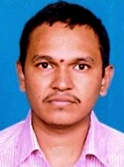Recent studies on particulate reinforced AZ91 magnesium composites fabricated by Stir casting – A review
Abstract
Magnesium Metal Matrix Composites (Mg MMC) have been the focus of consideration by many researchers for the past few years. Many applications of Mg MMCs were evolved in less span of time in the automotive and aerospace sector to capture the benefit of high strength to weight ratio along with improved corrosion resistance. However, the performance of these materials in critical conditions is significantly influenced by several factors including the fabrication methods used for processing the composites. Most of the papers addressed all the manufacturing strategies of Mg MMC but no paper was recognized as a dedicated source for magnesium composites prepared through stir casting process. Since stir casting is the least expensive and most common process in the preparation of composites, this paper reviews particulate based Mg MMCs fabricated with stir casting technology. AZ91 series alloys are considered as the matrix material while the effect of different particle reinforcements, sizes , weight fractions on mechanical and tribological responses are elaborated in support with micro structural examinations. Technical difficulties and latest innovations happened during the last decade in making Mg MMCs as high performance material are also presented.
Downloads
Copyright (c) 2020 Anil K. Matta, Naga S. S. Koka, Sameer K. Devarakonda

This work is licensed under a Creative Commons Attribution 4.0 International License.
Authors retain full copyright to their individual works.
The Journal of Mechanical and Energy Engineering (JMEE) publishes fully open access articles.
Open Access benefits:
- High visibility – all articles are made freely available online for everyone worldwide, immediately upon publication.
- Increased visibility and readership.
- Rapid publication.
- All articles are CC BY licensed. The final article can be reused and immediately deposited in any repository.
- Authors retain the copyright to their work.
By publishing with us, you retain the copyright of your work under the terms of a Creative Commons Attribution 4.0 International (CC BY) license.
The CC BY license permits unrestricted use, distribution and reproduction in any medium, provided appropriate credit is given to the original author(s) and the source, a link to the Creative Commons license is included, and it is indicated if any changes were made. This means that you can deposit the final version of your work in any digital repository immediately after publication.
We are committed to providing high-level peer review, author and production services, so you can trust in the quality and reliability of the work that we publish.





